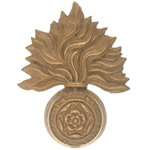Commemorated: | |||
| 1. Memorial: | Poelcapelle British Cemetery | Sp. Mem. 3. | |
| 2. Book: | The (1921) Masonic Roll of Honour 1914-1918 | Pg.128 | |
| 3. Memorial: | The (1940) Scroll - WW1 Roll of Honour | 49D GQS | |
Awards & Titles: | |||
Family :
Son of J. Gordon Langton and Emily Langton, of 9E, Hyde Park Mansions, London; husband of Una M. Langton, of Glendura, 92, Hornsey Lane, London.Education & Career :
A pupil of Professors Secvik (Prague), Wirth (Berlin), and Auer (Russia).
Service Life:
Campaigns:
- The First World War 1914-1918, World-wide.
| Unit / Ship / Est.: 4th Battalion London Regiment (Royal Fusiliers) |
1/4th (City of London) Battalion (Royal Fusiliers) August 1914 : at Shaftesbury Street in City Road. Part of 1st London Brigade, 1st London Division. Moved on mobilisation to guarding the Basingstoke-Waterloo railway. 4 September 1914 : sailed with Brigade from Southampton to Malta, arriving Valetta 14 September. 2 January 1915 : left Malta, arrived at Marseilles on 6 January. 10 February 1915 : joined the Ferozepore Brigade in 3rd (Lahore) Division. 11 November 1915 : transferred to 137th Brigade in 46th (North Midland) Division. 15 November 1915 : transferred to 140th Brigade in 47th (2nd London) Division. 9 February 1916 : transferred to 168th Brigade in 56th (London) Division. |
| Action : The Battles of Ypres 1917 (Third Ypres, or Passchendaele) |
31 July - 10 November 1917. By the summer of 1917 the British Army was able for the first time to fight on its chosen ground on its terms. Having secured the southern ridges of Ypres at Messines in June, the main attack started on 31st July 1917 accompanied by what seemed like incessant heavy rain, which coupled with the artillery barrages conspired to turn much of the battlefield into a bog. Initial failure prompted changes in the high command and a strategy evolved to take the ring of ridges running across the Ypres salient in a series of 'bite and hold' operations, finally culminating in the capture of the most easterly ridge on which sat the infamous village of Passchendaele. The Official History carries the footnote ?The clerk power to investigate the exact losses was not available? but estimates of British casualties range from the official figure of 244,000 to almost 400,000. Within five months the Germans pushed the British back to the starting line, which was where they had been since May 1915.
Detail :
great war forum LANGTON, HUGH GORDON LODGE 3069 Second Lieutenant HUGH GORDON LANGTON 4th Bn., London Regiment (Royal Fusiliers) who died age 32 on 26 October 1917 Son of J. Gordon Langton and Emily Langton, of 9E, Hyde Park Mansions, London; husband of Una M. Langton, of Glendura, 92, Hornsey Lane, London. We have discussed him on the Forum a number of times. He has the only CWGC headstone with a personal inscription in music rather than words. Kate, had a look and he's not in the ILN. I believe you need to try and look in this book for him: Masonic Roll Of Honour 1914-1918: Names of Brethren who fell in the service of their King & Country during the Great War.' by N.A., London, 1921 (I last saw it on a book list a year ago). Someone on the forum may have it, or be able to advise on where it can be accessed. Steve First bit of education - the sign after the treble clef means there are four beats in a bar, or common time. Its origins are in mediaeval proportional notation indicating 'imperfect' as opposed to 'perfect' rhythm. Triple time was seen to be 'perfect' and was thus represented by a circle: 'imperfect' rhythm was represented by a broken circle. The 'C' has never stood for Common time. People keep mentioning allabreve time: this is usually two minim beats in a bar and has a vertical stroke through the broken circle. These time signs are archaic and it puzzles me, as a practical musician, why some folks still use them As for 'After the Ball' - it is a perfect match.....apart from the wrong notes and the wrong rhythm. The stone has a pair of equal quavers whereas 'After' has a dotted quaver - semiquaver rhythm. The fourth and fifth notes on the stone are equal crotchets whereas 'After' has a dotted crotchet and quaver. Despite this, there is a sort of superficial similarity. There is no melodic similarity at all. A final thought - if it was meant to represent 'After the Ball is Over' the notes given would cover 'After the Ball is O'. It is a very silly theory. I cannot identify the tune (if it is a known tune) but neither can anyone else thus far
Masonic :
| Type | Lodge Name and No. | Province/District : |
|---|---|---|
| Mother : | Gordon Langton No. 3069 E.C. | Middlesex |
Initiated | Passed | Raised |
17th January 1905 | 21st February 1905 | 21st March 1905 |
Source :
The project globally acknowledges the following as sources of information for research across the whole database:
- The Commonwealth War Graves Commission
- The (UK) National Archives
- Ancestry.co.uk - Genealogy, Family Trees & Family History online
- ugle.org.uk - The records of the United Grand Lodge of England including the Library and Museum of Freemasonry
Additional Source:
- Founder Researchers : Paul Masters & Mike McCarthy
- Researcher : Bruce Littley

